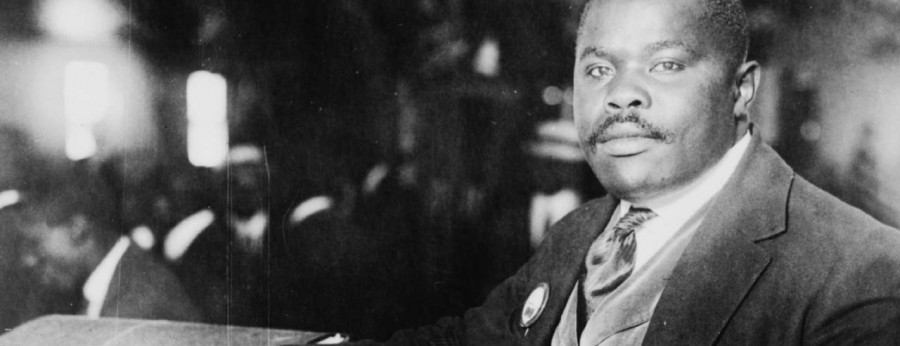
Why Marcus Garvey's Teachings Are as Important Today as They Were in His Time - Atlanta Blackstar
It is often said that those who cannot remember the past are condemned to repeat it. In the case of Black people, there are leaders who, during troubled times, provided templates for self-empowerment, models for us to emerge from our oppression and build our own institutions. And it is incumbent upon us to learn the lessons they laid out for us, rather than reinvent the wheel. One of the foremost examples is Marcus Garvey, the father of Black Nationalism and Pan Africanism.
Garvey’s teachings are as important today as they were over one hundred years ago, when he founded the Universal Negro Improvement Association (UNIA).
On July 20, 1914, Garvey founded the UNIA, which according to historian Lawrence Levine, was “the broadest mass movement” in African-American history. Inspired by Booker T. Washington, Garvey originally established the UNIA in order to provide economic and educational uplift for Black people.
Garvey came at a time when people of African descent sought relief from racism and colonial oppression. In the U.S., Jim Crow segregation and the subjugation of Black people were the order of the day. The post-Civil War Reconstruction Era had been rolled back to make way for the continuation of slavery under a new name. America was witnessing the height of lynching, when Black bodies—men, women and children—were subjected to violence by white vigilante mobs. D.W. Griffith’s 1915 film, Birth of A Nation, glorified the Ku Klux Klan, helping to bring about a resurgence of the Klan, and its refounding in Stone Mountain, Ga. that year.
At its height, the UNIA claimed a membership of upwards of 8 million people, with branches in nearly every country in the Caribbean, Latin America and Africa. In 1920, the organization held its first international convention in Madison Square Garden, drawing 25,000 people from around the globe.
In 1919, Garvey incorporated his Black Star Line in an effort to establish trade and transport passengers throughout the African diaspora, and by 1920, his newspaper, Negro World, had a circulation between 50,000 and 200,000. Garvey was about the business of nation building. He established a form of Black nationalism based on unity, cultural pride and autonomy.
“Where is the Black man’s government?” Garvey asked. “Where is his King and his kingdom? Where is his President, his ambassador, his country, his men of big affairs? I could not find them. And then I declared, ‘I will help to make them.'”
Further, Garvey adopted the term “Black is beautiful” decades before it became widely acceptable, understanding that in order to succeed, a people had to feel good about themselves and have positive self-identification.
Further, symbols are important, and Garvey’s UNIA developed the Pan-African flag. As Azizi Powell noted in The History & Meaning Of The Red, Black, And Green Flag, the flag was created in 1920 in response to the popular 1900 c00n song, “Every Race Has a Flag but the c00n,” which helped popularize the word “c00n” in the American vocabulary.
“Show me the race or the nation without a flag, and I will show you a race of people without any pride. Aye! In song and mimicry they have said, ‘Every race has a flag but the c00n.’ How true! Aye! But that was said of us four years ago. They can’t say it now,” said Garvey.
As Powell notes, the three colors of the Pan-African flag are, “Red: the blood that unites all people of Black African ancestry, and shed for liberation; Black: Black people whose existence as a nation, though not a nation-state, is affirmed by the existence of the flag; and Green: the abundant natural wealth of Africa.”
Decades before J. Edgar Hoover waged a full-scale war on Black leaders to prevent the rise of a Black messiah, he helped to bring down Garvey, whom he described as a “notorious negro agitator.” Described by some as a personal vendetta, certainly Hoover was concerned about Garvey’s expanding influence and the power of his movement for Black people.
Looking ahead one century and one year since Garvey founded the UNIA, we need to learn from his teachings more than ever. Consider the problems we continue to face throughout the African diaspora, including poverty, economic exploitation and internecine conflict. In the U.S., poverty plagues the Black community at an alarmingly high rate, and Black unemployment seems to permanently remain at double the white rate.
Despite the legislation which emanated from the Civil Rights Movement, Black people are not free and they have no power, including power over their own communities. The larger society will not employ us, but they will imprison us, as they have by the multitudes, separating our families and destroying our communities, as we are used as raw materials for the prison factories.
And whether by the police, the courts, or vigilantes, this society continues to kill Black women, children and men—in the streets, in the police car, in the jail house and elsewhere, all because we have no power, and they know it.
Without the unity and self-help advocated by Marcus Garvey, we will never achieve true freedom. The red, black and green of the UNIA flag represents the struggles and achievements of Black people around the world.
Last edited: